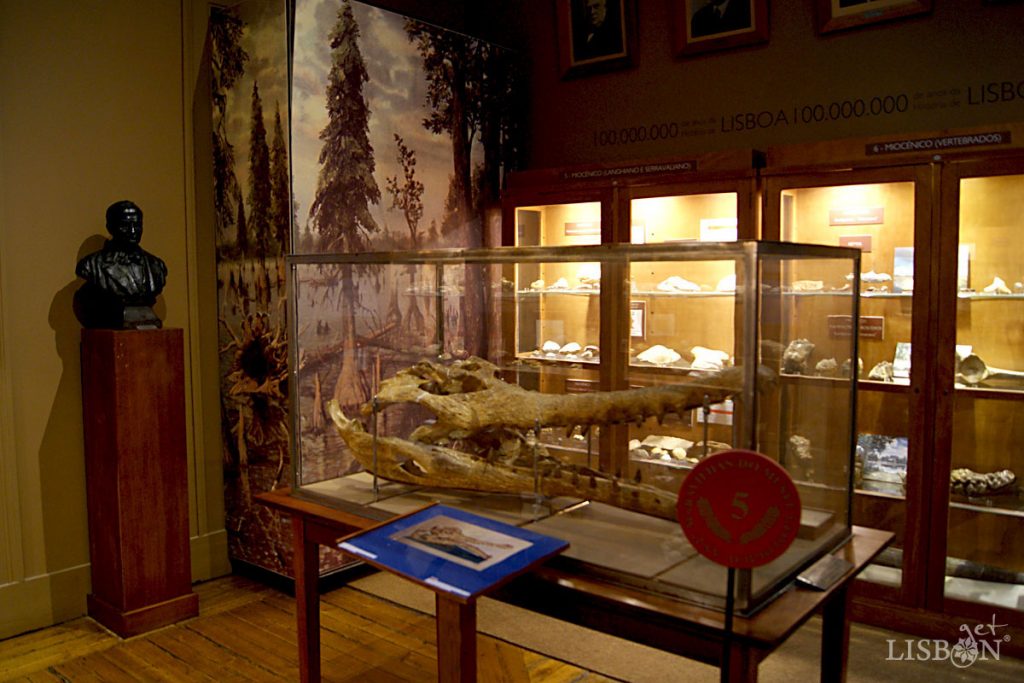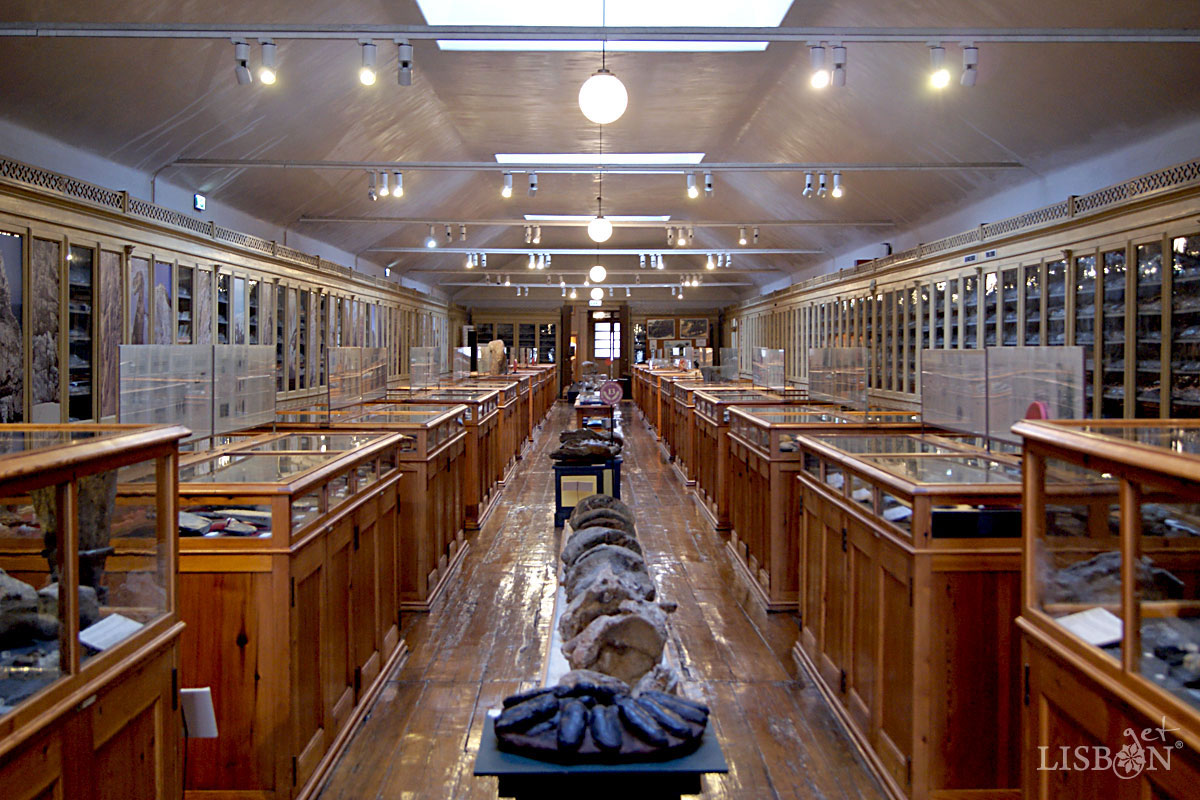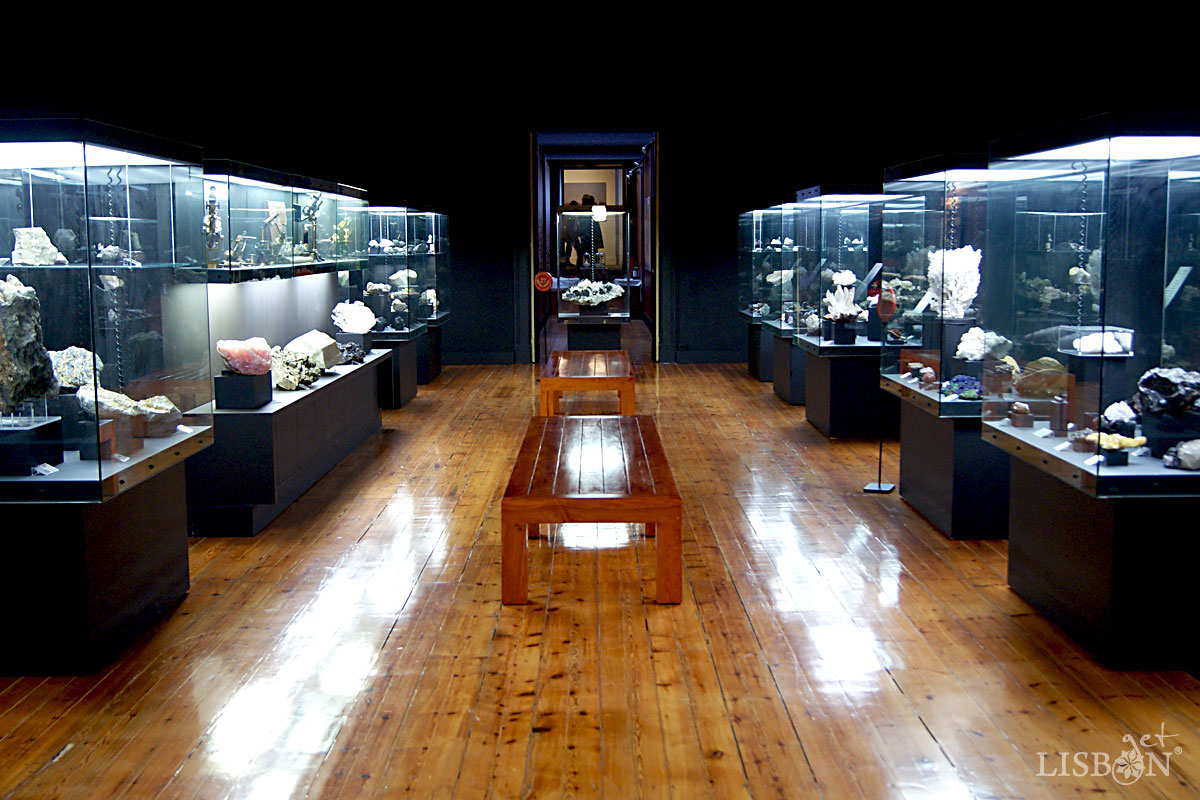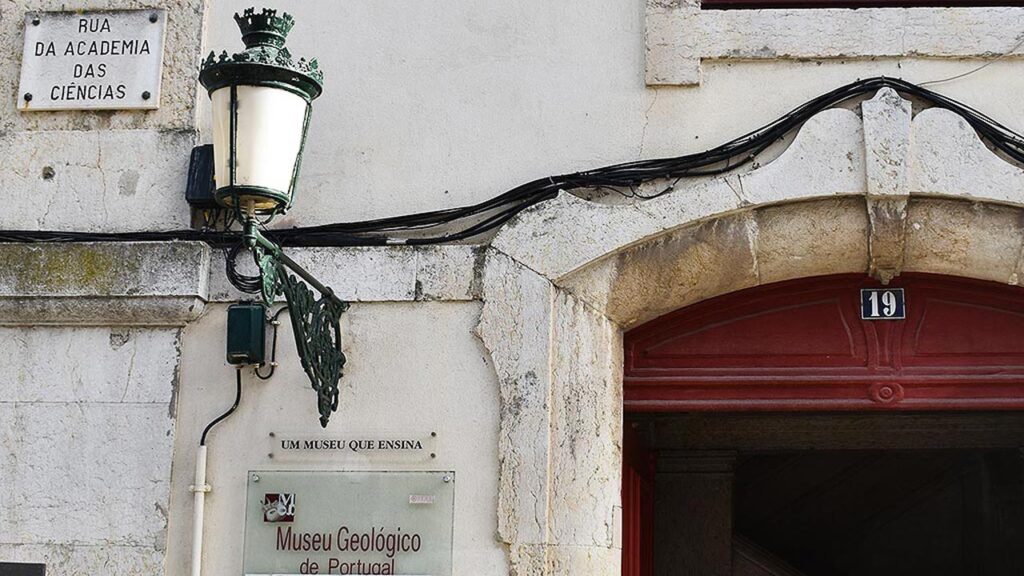Original article published on 11 April 2018
The Geological Museum is a small museum full of treasures, testimonies of other times. It was created in 1857 after the countrywide geological survey, carried out by Carlos Ribeiro and Nery Delgado, who at the time headed the Geological Survey. Since its founding, it occupies the second floor of the Convent of Jesus on Rua da Academia das Ciências.
Get to know Lisbon’s historic neighbourhoods in a guided tour and discover unmissable places of this magnificent city.
The Museum is valuable not only by its exhibited collection, but also because the museum itself is a testimony of an old museum. In the bookshelves and showcases made of wood and glass, packed with samples of stones, fossils and artefacts, we can breathe the 19th century’s air.
If you’re picturing something decrepit and stuck in time, you’re wrong.
Today the Geological Museum is part of the National Laboratory of Energy and Geology. Its collection is frequently studied by specialists from various areas, both national and foreign, giving rise to relevant scientific studies. It is also permanently expanded with collections from current geological mapping works.
But for a non-expert audience in these matters, why visit a Museum full of stones stored in old shelves?
A museum is always a repository of materials of intrinsic value. Value that can be added up by the answers that these materials give to those who ask them questions. Yes, stones also give answers! Here you can find the biggest and most important Palaeontology Collection at a national level.



The Exhibition’s Nuclei
Firstly, we find the Lisbon Geology Room.
The city of Lisbon, during the earthquake of 1755, suffered very different levels of destruction. What is the reason why the city centre was totally devastated and other areas suffered almost no damage? The answer lies in the geology of the terrain.
Well, the centre of the city rests on clay grounds. In contrast, we find areas with harder terrain, for example the west side of Campo de Ourique, where we find limestones and basalt of the Lisbon Volcanic Complex. This alone explains a lot, don’t you think?
Volcanoes in Lisbon? Yes, volcanoes and also Jurassic dinosaurs, mastodons, hippos, rhinos and crocodiles of the Miocene, ancestors of horses and bulls…
But also reefs and extraordinary marine life. Whales, sharks and all kinds of large bivalves, whose shells were deposited and over the course of millions of years became stones. These are today the materials with which we have built our monuments over the centuries and paved the spaces we tread daily, without realizing that they contain testimonies of past lives.
Fossils of these and many other animals found in Lisbon and in other parts of the country, constitute an important collection and can be seen in this first room and in the nucleus dedicated to Palaeontology.

But the Geological Museum does not only have fossils of animals and plants, testimonies of other times. In a second nucleus Archaeology takes place.
The human presence in Portugal is clear in several types of artefacts that transport us between the Lower Palaeolithic and the Roman occupation of the territory. Here takes place, art, invention, technology, industry…
The end of the visit leaves us with a more modern room, dedicated to Mineralogy where you can see gems, crystals and ornamental stones, an excellent display that holds exemplars from all over the world.

| Never miss another article | Subscribe here |
Connected Knowledge
The Geological Museum highlights from its precious collection 27 Wonders, distributed across the rooms. Come and meet them and after an attentive visit, surrender to the importance of geological knowledge.
This is closely linked to other knowledge, such as Botany, Biology, Archaeology, Anthropology, History and Art… the development of a region, its history and its artistic, craft or industrial productions, are deeply connected to the resources and physical conditions available.
Different knowledge brings more knowledge. Hence the interdisciplinary study of these and other subjects being more and more urgent.
Bring your questions and be prepared to find your answers here.
You can find detailed information on the museum website.
The project getLISBON has been very rewarding and we want to continue revealing the singularities of fascinating Lisbon.
Help us keep this project alive!
By using these links to make your reservations you’ll be supporting us. With no extra costs!
• Looking for a different experience? We can create a customised itinerary based on your interests. Contact us!
• Or if you prefer tours and other activities in various destinations, take a look at GetYourGuide.
• Save time and money with a flexible Lisbon Card!




